
Ad from Womans’ Home Companion, March, 1936.
“My husband is out of employment and has been for some time…. Our savings are gradually disappearing, and I am so helpless. I don’t know a thing I can do to earn money….” The Woman’s Home Companion invited her to sell magazine subscriptions.
One of the fascinations of vintage women’s magazines is their “time capsule” quality. While reading through them for fashion information, I can’t resist the advertisements, which give me a idea of the era’s preoccupations (zeitgeist is the correct word, I suppose.) What was new — from zippers to steam irons? What did advertisers want people to worry about, from halitosis and pyorrhea to underarm hair? In the Thirties, massive male unemployment found many women desperate to help support their families.

Women’s magazines had many such ads, promising that women could make money at home — “no experience needed.” Ad from Delineator, February 1931.
Before color photography was widespread, black and white photos were hand tinted — “We instruct you by our new simple Photo-Color process and supply you with work.” Coloring printed images was already “women’s work.” In the 19th century, some women had earned money by hand-painting fashion plates with watercolor.
I realize that researchers tend to notice what they expect to find, so it’s not surprising that, as the child of people who married in 1933 — in the heart of the Great Depression — I noticed these little ads crowded into the backs of magazines.

A few ads from the back of Delineator magazine, October 1931.
Here is a selection of ads which promised women that they could earn money at home, with no experience or skills. Some of them were probably preying on the desperate — but perhaps I’m just cynical….

Top of an ad for Brown Bobbys, Delineator, February 1931.

Text of Brown Bobby ad, February 1931. Brown Bobbys were doughnuts. I suspect that the Food Machine Display Corp. was willing to sell families the equipment for a home doughnut business.
Women might also try to start a candy business….

Open your own candy business? “Making and sales equipment furnished.” Delineator, February 1933. The American School of Home Economics was already publishing home economics study courses and books in the 1920’s, including Cooking for profit: catering and food service management.
Or sell clothing…

“Women — Sell Fashion Frocks…. Earn up to $22 a week and get all your own dresses without a penny of cost.” Ad from Delineator, April 1936.

Sell Silk Hose: “Startling money-making proposition…. enormous earnings…Your own hose free of cost.” Ad from Womans’ Home Companion, November 1936. Wilknit Hosiery Co. ad. [Do you think that guaranteed stocking replacement might be a problem?]
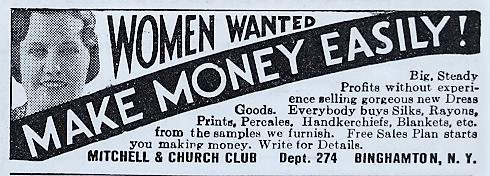
“Women wanted” to sell fabric, sheets, handkerchiefs, blankets… Mitchell & Church Club ad, Delineator, February 1934.

“Do you want to make money? … Sell Fashion Frocks.” Ad from WHC, March 1937. “We are appointing a few more ambitious women to act as our representatives.”
[I don’t think it would be easy to sell dresses or anything else to your friends and relatives if you were all equally broke….]

October, 1934; Delineator. “Start earning at once. Thousands of prospects near you.” General Card Co., Chicago.

Was there really such a demand for hooked rugs? From a series of ads for Hollywood Studio Stores, Inc., Ltd., Delineator, December 1934. “Women… Earn extra money at home making beautiful hooked rugs…. Make money the first week! …We furnish complete instructions, tools, and materials.”

Another “Hooked rugs” ad, November 1936. “No experience necessary.”
Fireside Industries said there was a market for hand-painted decorative items:

“Make extra money at once” — after you learn to “decorate clever art gifts at big profit per piece. No experience needed … No tedious study… You don’t even have to leave the house.” October 1931, Delineator. Fireside Industries ad.

Fireside Industries ad, March 1935. Delineator. “Everything furnished including supply of Novelties, for you to decorate and Homecrafters outfit.” “Openings in every locality.” “FIRST LESSON FREE.” [And then?]

Ad for Wallace Brown, Inc. greeting card sales, Delineator, February 1937. “Show samples to friends and neighbors. Everybody buys.”

Bluebird Studios ad, WHC, Sept. 1936. “Sells on Sight. Box on approval.” The text looks very similar to that Wallace Brown ad, above.
The words “Earn,” “Easy,” and “Extra Money” appear again and again, often with the promise that women can work from home..

Process Corporation ad, August 1931. ” Thousands of women — many without experience — turn their spare minutes into dollars…. Permanent, big-paying position, if you make good.”

Process Corporation sought women and men to sell greeting cards” imprinted to customer’s order.” October, 1931, Delineator. Jeanette Maumus of New Orleans “Earned $78.20 in 45 minutes. $87.50 just a day’s sales for Mrs. H.H. Castle, Burke, Idaho.”

Janes Art Studio ad for card sellers. Sept. 1934. This ad admits that the pay is on commission — which makes Mrs. H.H. Castle’s $87 in sales look a little less lucrative.
From my own experience in door-to-door sales, sometimes you have to sell a “quota” amount before you qualify for the commission. In 1967, if I didn’t sell enough children’s encyclopedias to meet my weekly sales quota, I didn’t get paid at all. I believe some car salesmen still face this problem.

Ad for John A. Hertel Co. Christmas card sales, September 1931. Delineator. “No experience needed.”
Other ads [which I regard less cynically] offered educational opportunities leading to a new career — in hotel management, dressmaking, or nursing.

Ad for Lewis Hotel Training Schools, October 1934, Delineator.

Women could “Be a Hotel Hostess” or possibly manage an apartment house — a good job for a single mother. Lewis Hotel Training School ad, October 1931. Delineator. In the ad just below, you could make $2 by tipping the Denver Optic Company off to potential artificial eye customers….
Back in the 1920’s, Lewis would teach you how to run a tea room, so this was an established business school:

Ad for the Lewis Tea Room Institute, Delineator, January 1924. “Fortunes are being made in this big new industry….”
Ads for nursing schools were also traditional, and little changed from 1924 to 1937 — except for the potential salary and the hats.

Ad for Chatauqua School of Nursing, January 1924. This school offered a home-study course.

Ad for Chicago School of Nursing, February 1935. “You can learn at home in spare time.”

Ad for Chicago School of Nursing, WHC, March 1937. “High School not required. Easy tuition payments.”

Ads for the Woman’s Institute have a long history, but during the Depression, the ads emphasized using your sewing skills to earn money. March, 1934.
I have some respect for the ads that suggested professional training for women who, like this one from the ad I began with, had never expected to work outside the home.

“I am nearly 35 years old and have no business experience…. My husband is out of employment and has been for some time.” Woman’s Home Companion ad for subscription sellers, March 1936.
And I can’t resist sharing (again) the “ad from the back of a magazine” that startled me into collecting them:

Ad from Delineator, March 1937. Courtesy Remembered Summers. Who wouldn’t leap at the chance to raise giant frogs for the American Frog Canning Company?
Now, that is desperation.


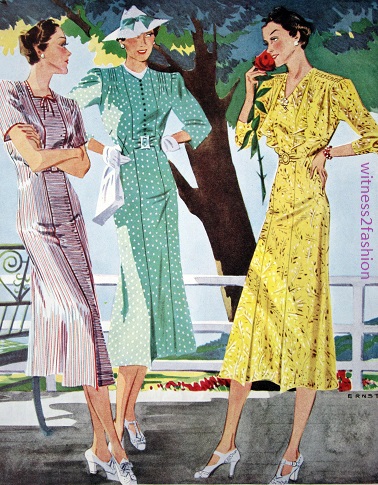
























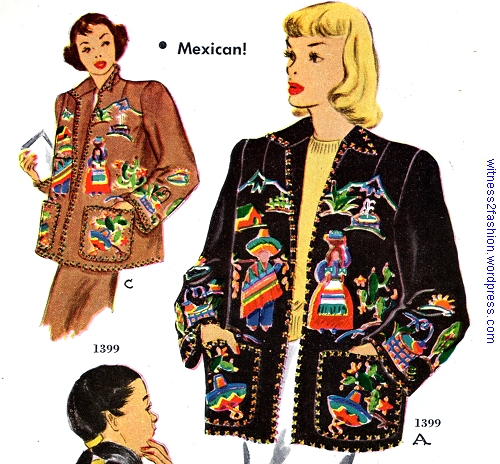




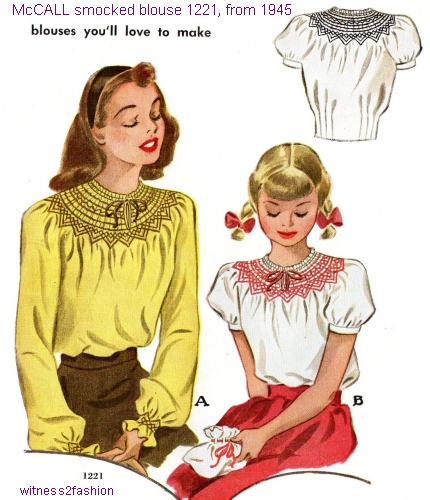























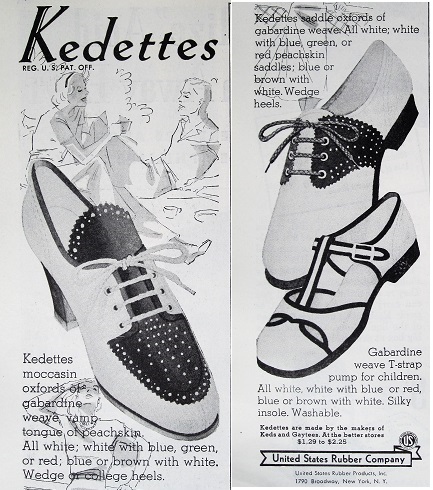






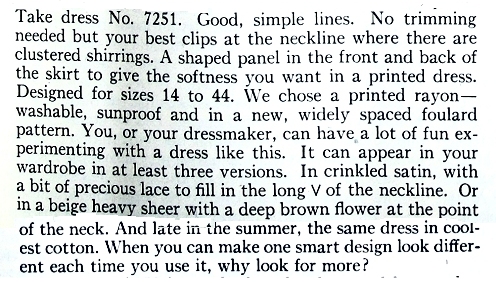



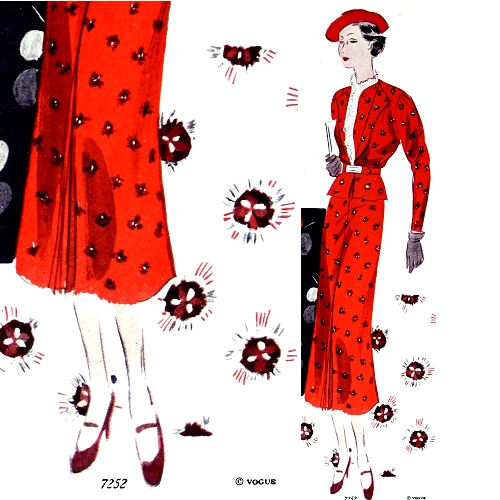












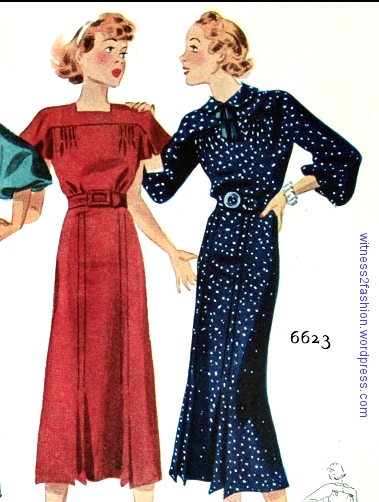








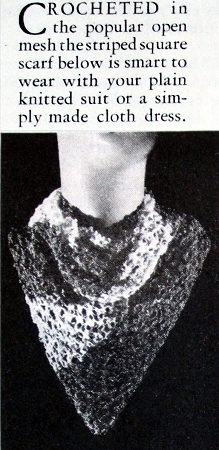

















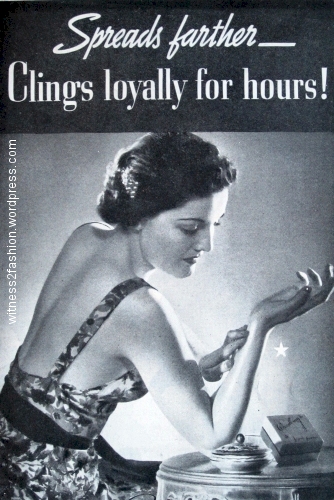




















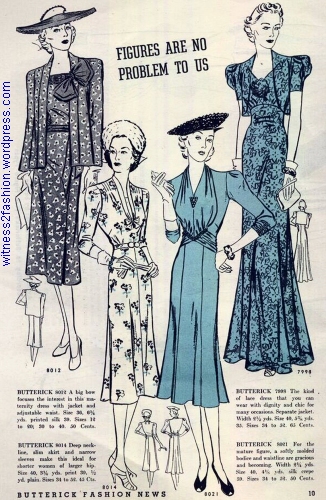



Hairstyles for April 1937
Illustration of “Six New Hairdressings for Gadabout,” Woman’s Home Companion, April 1937. Ben-Hur Baz, illustrator.
The Womans’ Home Companion had hairstyles from leading salons illustrated in April of 1937.
Text for “Six Hairdressings” article, WHC, April 1937. The letters next to each head are the call numbers for radio stations, where readers could listen to fashion reports..
On the theory that product advertisements use models that women can identify with, I browsed through advertisements from 1936 and 1937 in the same magazine, looking for photographs, rather than drawings. Some hairstyles in ads did have this tightly curled and controlled look.
Tight, sculptured curls in an ad for Ipana toothpaste. WHC, Oct. 1936.
Here, the hair seems to reflect the models’ state of digestion….
Woman to woman advice in a Phillips’ Milk of Magnesia ad, WHC, Dec. 1936.
One of the models in this ad for Phillips’ Milk of Magnesia [a laxative] is definitely curled “up tight” (constipated hair?)
And so is the mother in this article about hairstyles for mother and daughter:
Supposedly, this is how the daughter wished her mother would update her hair style. WHC, May, 1937.
I get the impression that tightly controlled hair styles were aimed at the sophisticated or “mature” reader. But not necessarily; there’s not a sculptured curl to be seen on these women who are pictured in an ad for Brownatone Hair Dye.
Women in an ad for hair dye show a range of styles, from a late 1920’s Marcel with tiny bun (lower left), to loose, almost collar- length waves. February 1937.
This chic sophisticate has far-from-casual hair…
Ad for Dorothy Gray cosmetics, March 1937. WHC.
… compared to this model in the same issue:
Soft, loosely waved hair on a model in an ad for Colgate toothpaste, March 1937.WHC.
Another off-the-face style from later in 1937:
Natural looking off-the-face waves in an ad for Doggett and Ramsdell cleansing cream. WHC, Dec. 1937. The asymmetrical hairstyle leaves room for an off-center hat.
Below, on the right, a group of models as “career girls.”
Top left, thick, loose curls from an ad for Dodge cars; right, shorter hair for “career girls;” and bottom left, a mother in an ad for Lux laundry soap. 1936-1937, WHC.
The Ponds face cream ads showed a series of lovely women; both the debutante and the duchess have loose, fluffy hairstyles:
Miss Phyllis Konta, New York debutante, in an ad for Ponds cold cream, WHC, March 1937.
The Duchess of Leinster’s hair had to accommodate a tiara. June, 1937, WHC. Ad for Ponds cold cream.
Colgate ran a series of toothpaste ads featuring women who looked lovely until they smiled.
Toothpaste ad, May 1937.
Toothpaste ad, September 1937.
This Bayer Aspirin ad shows two views of the same headache-sufferer. Did taking an aspirin relax her hair?
Before and after in an ad for Bayer Aspirin. WHC, Dec. 1936.
As in the ad for Milk of Magnesia, relief and comfort are symbolized by a more natural hairstyle.
Of course, in 1937, a woman’s hairstyle was dictated by the need to wear a hat while shopping or dining in restaurants, so a curl-free area was usual in daytime hairdos.
Women in a color ad for Dodge, Dec. 1937
Women in an ad for Ponds cold cream, Oct. 1937. The hostess is the only one without a hat, and the crown of her head is smooth — and hat-ready..
Two women wearing hats; Kotex ad, Nov. 1937.
With the exception of motion picture actresses, the hair is usually worn rather close to the head.
Movie starlets in an ad for Richard Hudnut makeup, April 1937.
Actress Merle Oberon in an ad for Richard Hudnut makeup, December 1937. Her hair softly frames her face. Her plucked and penciled eyebrows look more 1920’s than 1930’s. (Compare them with the other models from 1937.)
The brushed-back hair of this model could almost pass for a 1950’s style — but it’s from February, 1937, before the “Six Hairdressings” article was written.
A brushed, almost casual hairstyle from an ad for Dorothy Gray cosmetics, February, 1937. Cartier supplied the jewels.
The model is far from girlish (and the jewels are from Cartier), but she seems much more “timeless” than Merle Oberon, and miles away from this:
Suggested “Hairdressings” from April, 1937. Woman’s Home Companion.
Maybe the ad agencies were more in touch with popular fashion than the editors of Woman’s Home Companion?
Added consideration: One disadvantage of close-to-the-head hairstyles is that, without a hat or fuller hair to balance the width of shoulders and hips, a normal woman can’t come close to the long, lean 1930’s fashion silhouette; this fashion photo from Woman’s Home Companion shows how small the head can look in relation to the figure. [Hair — and shoulders — got much bigger by the forties!]
A photo of “styles in stores;” WHC, March 1936.
In the mid-thirties, as photography replaced fashion illustrations in the “women’s magazines,” women had a more realistic image of what was possible.
Instead of adjusting our idea of beauty, the magazines and designers eventually adjusted the height and weight of the models they used.
2 Comments
Filed under 1930s, Cosmetics, Beauty Products, Hairstyles, Makeup & Lipstick, Old Advertisements & Popular Culture
Tagged as 1930s fashions, 1930s Marcel hair style, 1930s styles, ad for Doggett and Ramsdell cleansing cream 1937, ad for Richard Hudnut makeup 1937, Ben-Hur Baz fashion illustator artist, bracelets from Cartier in cold cream ad 1937, Brownatone hair dye for gray hair 1937 thirties 1930s, Doris Nolan actress 1930s, Dorothy Gray ad 1937, Duchess of Leinster in cold cream ad 1937, Ella Logan actress 1930s, fashion history, Great Depression, hairdressings for 1937 hair styles, hairstyles for women 1937 thirties 1930s hairdos, Ipana toothpast Colgate ads 1930s, Janice Jarratt actress 1930s, Jean Abbey fashion commentator 1930s radio, Merle Oberon actress 1937 ad for makeup, phillips' Milk of Magnesia ad 1936, Phyllis Konta New York debutante 1937, Ponds face cream ad 1937, sculptured hair styles hairdo 1937 1930s thirties curls, thirties clothing, thirties fashion, tight curls in 1937 hair, Woman’s Home Companion